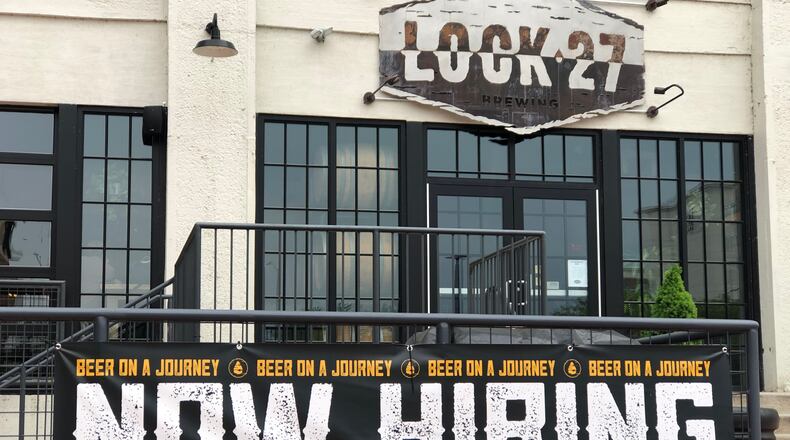But the rate of growth slowed last month, and the region is recovering jobs that were wiped out early in the pandemic at a slower rate than most other metro areas in the state.
There are plenty of local job openings, but employers are struggling to find workers, said Holly Allen, vice president of marketing and communication with the Dayton Area Chamber of Commerce.
“Nearly every employer we talk to is hiring, and in most cases, it’s been a struggle to find the right fit for the positions they have available,” she said. “This isn’t just a Dayton-area problem, this is an issue employers are facing nationwide.”
Employment in the Dayton metro area increased by 800 jobs last month (+0.2%) to 376,400 workers, according to preliminary and seasonally adjusted data from the U.S. Bureau of Labor Statistics.
That was after the local economy added 1,000 jobs in September (+0.3%), according to recently revised labor data. The metro area includes Montgomery, Miami and Greene counties.
The region hadn’t experienced back-to-back months of employment growth since late summer of 2020.
After losing a colossal 61,000 jobs in March and April of 2020 during the COVID-19 lockdown, the region experienced a pretty strong rebound in the labor market.
The local economy saw five straight months of job growth, regaining 39,400 of the jobs that were erased.
But the local economy faltered after that and has lost jobs in more months than it has added them.
Since October 2020, the Dayton metro area has added 4,000 net jobs, which means it has recovered about 71% of the early pandemic employment losses.
Only three of Ohio’s 10 other metro areas have regained a lower share of job losses: Cleveland (64%), Youngstown (66%) and Canton (70.8%).
Dayton also trails the state, which has gained back about 74.3% of the jobs it shed.
Ohio still remains 228,600 jobs below the pre-COVID employment level of February 2020, and some researchers say the Buckeye State isn’t faring as well as some of its peers.
“Ohio is recovering jobs about half as quickly as the nation, with a monthly growth rate averaged over the last six months of 0.24%, compared with 0.46% for the U.S.,” according to liberal-leaning Policy Matters Ohio.
Locally, most industries say they are seeing pre-pandemic levels of business and demand, said Allen, with the Dayton area Chamber.
But the pandemic has created a “perfect storm” labor shortage that is holding the economy back, she said.
Many older workers — including many Baby Boomers — decided to retire during the pandemic and there are not enough Generation Z workers in the labor market to fill all the job openings, she said.
Some employers are offering higher pay or are considering creative shift adjustments to entice parents and retirees to work part-time, Allen said. Some local employers, like Chewy, are offering signing bonuses and other perks to appeal to job-seekers.
“The work is there, and our local business leaders are coming up with innovative ways to overcome the labor shortage and continue to ride the economic growth we’re seeing in the Dayton area,” Allen said.
Some local businesses have posted “we’re hiring” signs in their windows or put up billboards advertising vacancies. Some business owners have posted on social media that they badly need workers to cover key shifts and fill vital roles.
Some people who exited the workforce are gone for good, but other sidelined workers will return eventually, said Augustine Faucher, PNC Bank’s senior vice president and chief economist.
“We’ll gradually see some of these people return to the workforce over the next year or so,” Faucher said earlier this month during PNC’s annual economic forecast breakfast at Carillon Park’s Eichelberger Pavilion.
Faucher said he thinks the Dayton metro area has some good things going for it, including population growth and favorable demographics.
About the Author



